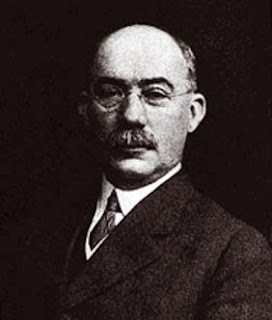1. Utilizando la técnica del SCANNING
PROJECT MANAGEMENT
Project Management, Tools, Process, Plans and Project Planning Tips
Here are rules, processes and tools for project planning and project management.
While project management skills are obviously important for project managers, interestingly the methods and tools that project managers use can be helpful for everyone.
A 'task' does not necessarily have to be called a 'project' in order for project management methods to be very useful in its planning and implementation. Even the smallest task can benefit from the use of a well-chosen project management technique or tool, especially in the planning stage.
Any task that requires some preparation to achieve a successful outcome, will probably be done better by using a few project management methods somewhere in the process. Project management methods can help in the planning and managing of all sorts of tasks, especially complex activities.
Project management is chiefly associated with planning and managing change in an organization, but a project can also be something unrelated to business - even a domestic situation, such as moving house, or planning a wedding.
Project management methods and tools can therefore be useful far more widely than people assume.
Project management techniques and project planning tools are useful for any tasks in which different outcomes are possible - where risks of problems and failures exist - and so require planning and assessing options, and organizing activities and resources to deliver a successful result.
Projects can be various shapes and sizes, from the small and straightforward to extremely large and highly complex.
In organizations and businesses, project management can be concerned with anything, particularly introducing or changing things, in any area or function, for example:
* people, staffing and management
* products and services
* materials, manufacturing and production
* IT and communications
* plant, vehicles, equipment
* storage, distribution, logistics
* buildings and premises
* finance, administration, acquisition and divestment
* purchasing
* sales, selling, marketing
* human resources development and training
* customer service and relations
* quality, health and safety,
* legal and professional
* technical, scientific, research and development
* new business development
* and anything else which needs planning and managing within organizations.
Successful project management, for projects large or small, tends to follow the process outlined below.
The same principles, used selectively and appropriately, also apply to smaller tasks.
Project management techniques are not just for project managers - they are available for anyone to use
.
EJERCICIO:
1. Para quiénes pueden ser útiles los métodos y herramientas de gerencia de proyectos?
Para todos los que quieran usarlas.
2. Para que sirven los metodos de gerencia de proyectos?
Para la planificación y gerencia de todo tipo de tareas especialmente las complejas.
3. Qué es gerencia de proyectos y que és proyecto?
Gerencia de proyectos está asociado a la planificación y gerencia de cambios en la organización. Y proyecto puede ser algo no relacionado con el negocio.
4.Una tarea puede ser llamada proyecto?
No necesariamente , pero puede ser útil para su planificación.
1. Utilizando la técnica de (Predicción, Deducción y Skimming).
Fishbone Diagrams

Fishbone diagrams are chiefly used in quality management fault-detection, and in business process improvement, especially in manufacturing and production, but the model is also very useful in project management planning and task management generally.
Within project management fishbone diagrams are useful for early planning, notably when gathering and organising factors, for example during brainstorming.
Fishbone diagrams are very good for identifying hidden factors which can be significant in enabling larger activities, resources areas, or parts of a process.
Fishbone diagrams are not good for scheduling or showing interdependent time-critical factors.
Fishbone diagrams are also called 'cause and effect diagrams' and Ishikawa diagrams, after Kaoru Ishikawa (1915-89), a Japanese professor specialising in industrial quality management and engineering who devised the technique in the 1960s.
Ishikawa's diagram became known as a fishbone diagram, obviously, because it looks like a fishbone.
De acuerdo al título y la imagen,
1.- ¿Cuál cree usted que es el tópico que está a punto de leer?
El texto es acerca del diagrama de pescado.
2.- ¿Cuál es la idea general del texto?
El diagrama de pescado es una herramienta para identificar fallas en un proceso y mejoras.
3.- •¿Que palabras se repiten?
diagrams, process, useful, planning, project, management.
•4.- ¿Que palabras se parecen al español?
diagrams, process, project, significant,activities, areas, parts.
•5.- ¿Cuales son las palabras en negrita, el titulo, subtitulo o gráficos que te ayudan a entender el texto?
Fishbone Diagrams y gráfico
•6.- ¿De qué trata el texto? Lee el primer párrafo y el último o la ultimas ideas del último párrafo.
El diagrama de pescado es usado principalmente por la gerencia de calidad y detección de fallas y en negocios de mejora de procesos principalmente en la manufactura y producción pero también es útil generalmente en la gerencia de tareas y de planificación de gerencia de proyectos.También es llamado diagrama causa -efecto y diagrama de Ishikawa mejor conocido como diagrama de pescado obviamente por el parecido al pescado.




